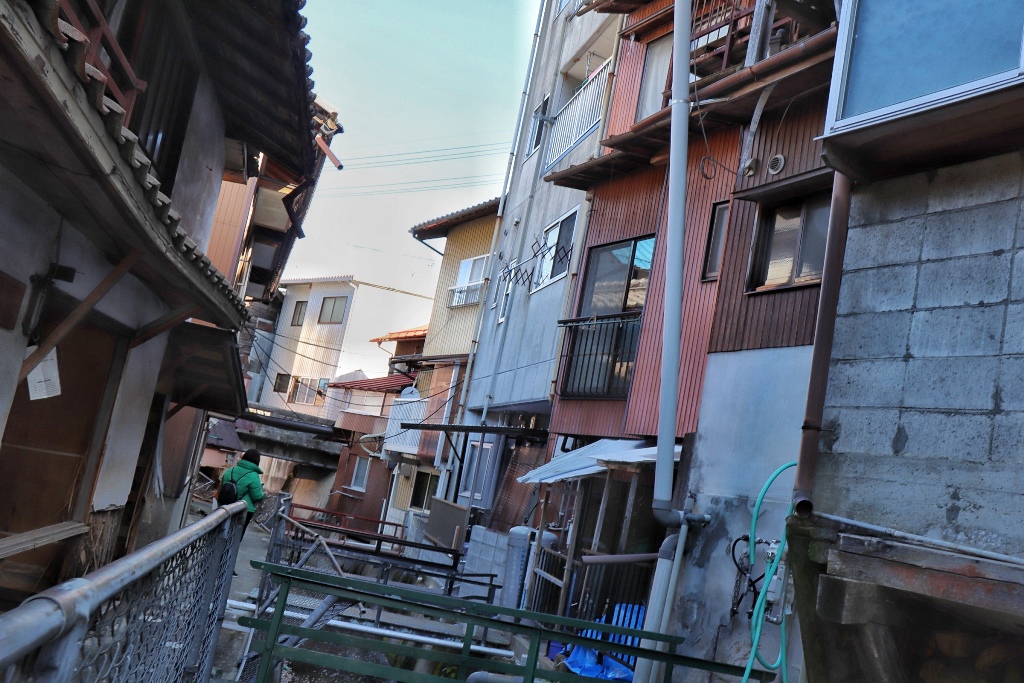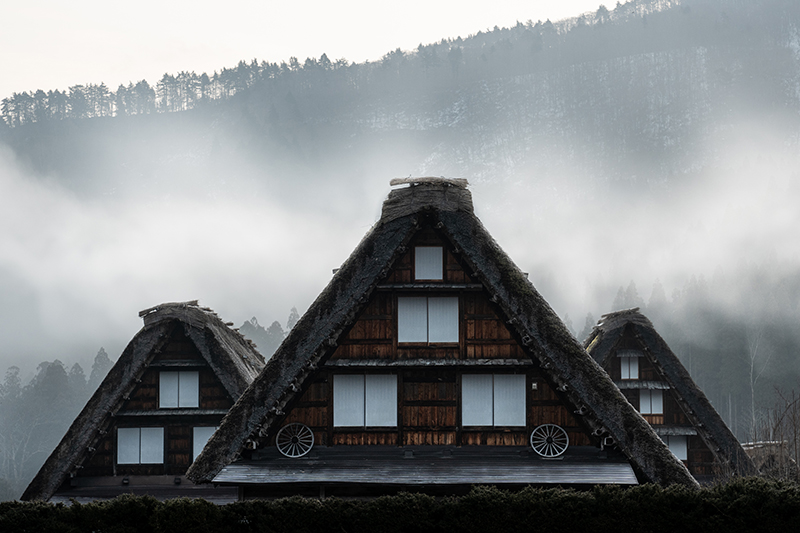
Nestled in a remote valley and flanked by the mountains of Gifu, Shirakawa-go is the type of place where it’s very easy to forget the rest of the world exists. Mountainous forests occupy almost 96% of the village’s area, and while it’s a stunning place to be, it’s easy to imagine that life here—especially generations ago—would be difficult. But it’s a life I’m soon to discover was made possible by a powerful philosophy which the locals call ‘yui’.
This pocket of the nation is recognized as one of the snowiest places in Japan, each year an average of 10 meters of snowfall coat the village and it’s not uncommon for snowbanks to hit the two-meter mark. The combination of isolation and harsh climate means it takes a certain type of person to call Shirakawa-go their home.
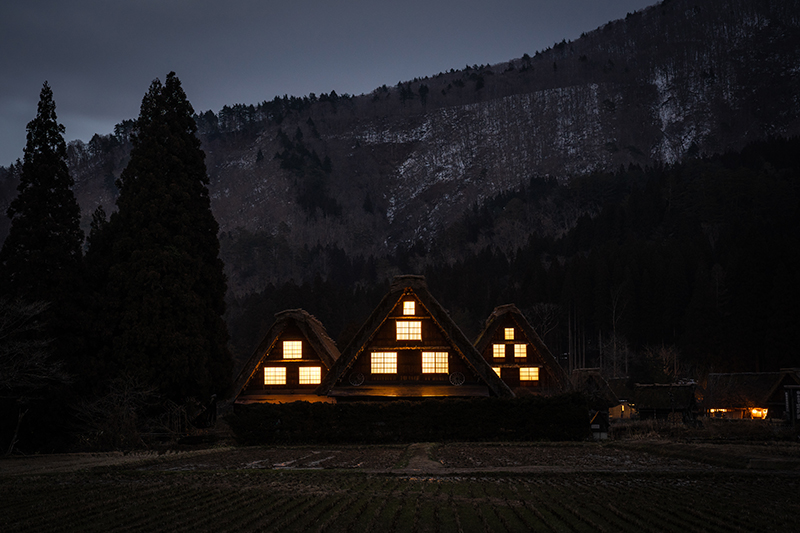
Shirakawa-go people need to be resilient and resourceful but also active community members, team players with an innate understanding of their land, and a passion for educating others. While this land was once considered part of the Hida Province, following the post-Meiji restoration (1868), the area became part of Gifu’s Ōno District. Not long after, in 1897, Shirakawa-go was formed.
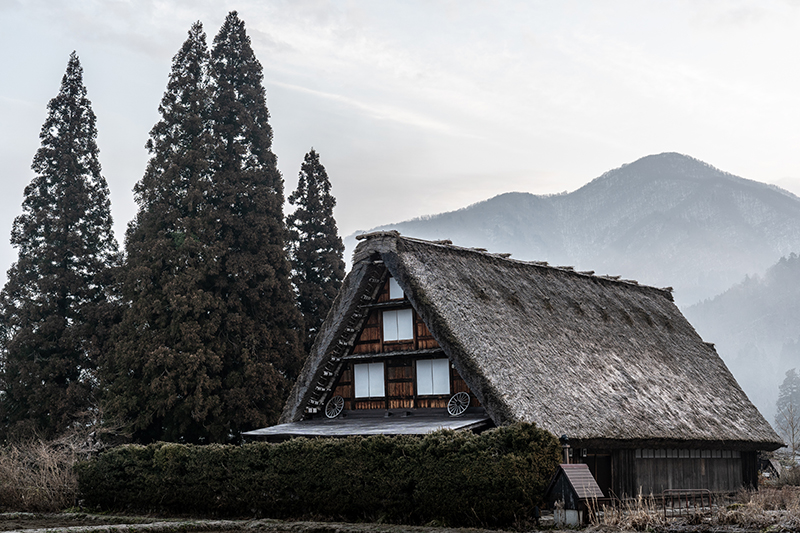
While the exact origins of the gassho-zukuri are shrouded in a little mystery, historians estimate these thatched-roof homes were constructed around 250 to 300 years ago. Cut off from the rest of the world for long periods, the people of Shirakawa-go managed to survive by cultivating mulberry trees and constructing the now iconic houses’ gassho-zukuri roofs, which served multiple economic purposes.
‘What does gassho-zukuri mean?’ You may wonder, well in Japanese, the term ‘gassho’ (合掌) translates to ‘praying hands,’ while ‘-zukuri’ (-造り) is a suffix taken from the verb ‘tsukuru’ (-造る) which means to build or manufacture. Essentially, if you put them together, the name is a reference to the houses’ steep roofs that resemble a Buddhist monk’s hands in prayer.
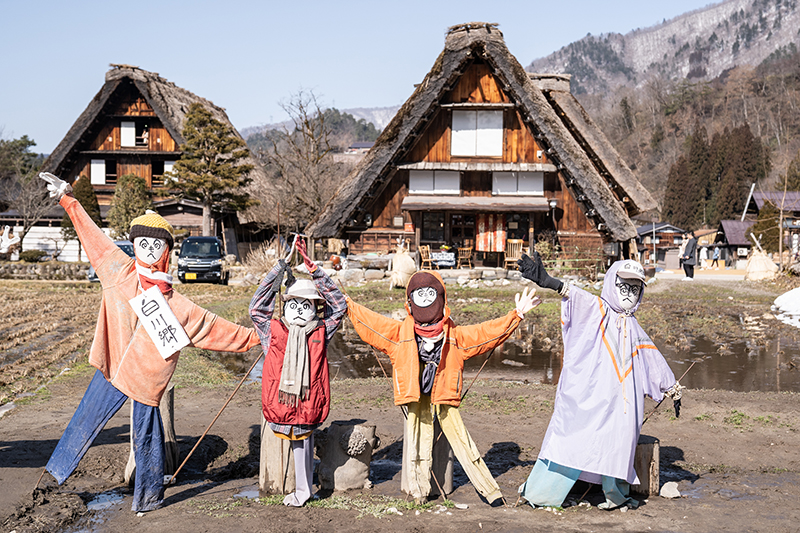
While thousands of guests visit throughout the year, drawn by the houses, as I was, many are surprised to learn that Shirakawa-go isn’t just some outdoor, open-air museum. It’s not just a relic of the past, but a fully functioning village, where locals continue to live just as their parents did and their parent’s parents before them.
Exploring the interior of one of the houses in Shirakawa-Go that’s open to the public, the architectural ingenuity of the building blows me away. As well as being visually impressive, the angle of the roofs was built just so to ensure that during winter, the heavy snow wouldn’t pile up and jeopardize the structural integrity of the house.
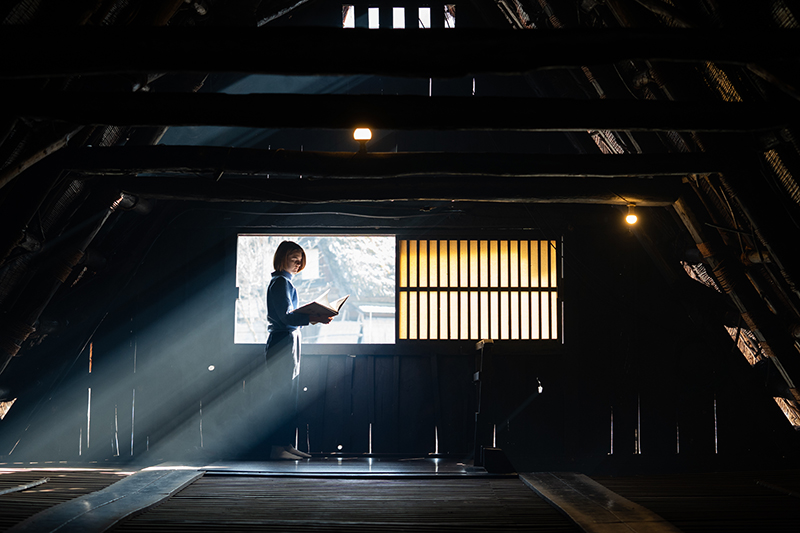
The top loft-like section of the home was used—and still is occasionally—mainly for display purposes or for the rearing of silkworms, an agricultural technique known as ‘sericulture.’ Because the surrounding climate was less than conducive for crop production, locals had to create new sources of income for the village.
These wriggly house guests were especially valuable pre-World War II, in the 1920s to 1930s, before the invention of nylon, when the country produced a large supply of silk stockings. Silkworm dealers would make the arduous journey to supply Shirakawa-go with the worms which would then be cared for and cultivated by the owners of the house, where they flourished as little squirming symbols of the Shirakawa-go’s ingenuity.

Some of the houses are museums open to the public but many others are private residences, meaning they’re still lived in, just as they have been for generations, seemingly unphased by the outside world. Arguably the most famous house in the area is Wada House, which is both. One of the biggest houses in the Shirakawa-go and the most visited, this home is presided over by Mr. Masahito Wada, who inherited the house from his parents.
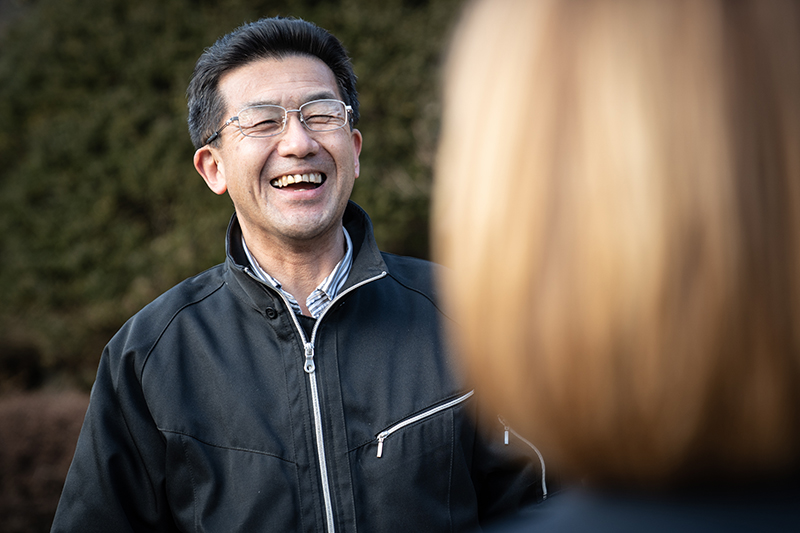
Mr. Wada is a man with an infectious—and seemingly permanent—smile, warm and welcoming, and so well versed in the history of the village, he’s the perfect ambassador for Shirakawa-go. Born in 1960, Mr. Wada was born locally and was raised in Wada House, but spent a large portion of his younger life working as a teacher, away from his beloved home village. Clearly a born educator, he now also participates as a lecturer as well as local historian.
“When I was a teacher, I worked outside Shirakawa-go. I transferred to a lot of different places,” he explained to me as we sat by the irori, an indoor fire pit used in traditional Japanese houses. But after traveling and working across the map, ultimately, there was only one destiny for him: “In the end I wanted to move closer to my parents, raise children here, and focus on village and house matters.”
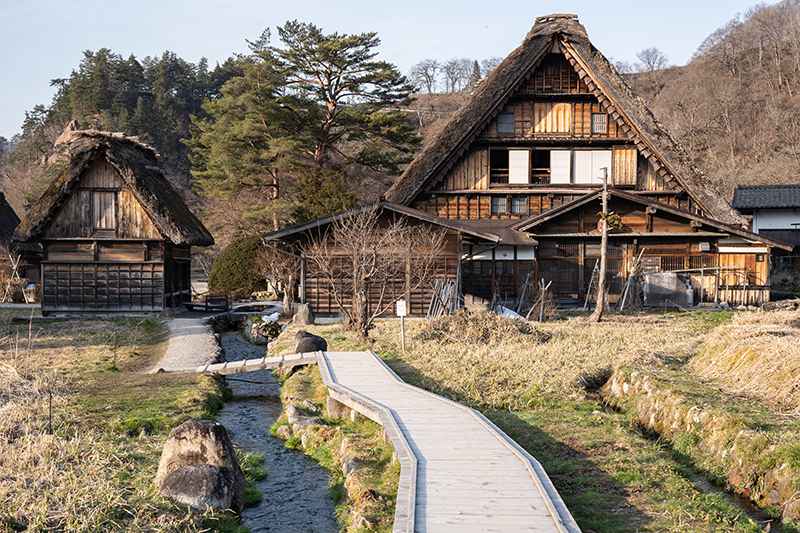
Wada’s role as one of the village’s most famous faces can be traced back to a pivotal moment in 1995. It was this year that the village of Shirakawa-go was recognized as a UNESCO World Heritage Site, a location of great importance to the culture of Japan. During this time, the board responsible for the recognition requested the Wada family to open their family house to the public as it’s an excellent representation of the culture. “Two years after the request,” Mr. Wada said, “in 1997, my parents opened it to the public.”
Turning your house, one that’s been in your family for countless generations—for context, Mr. Wada estimates that he’s the 20th-generation homeowner—into a display for the public, one where strangers can wander through day in and day out would be unfathomable to most. But for the Wada family, this act of generosity was a no-brainer. It was an act for the village’s common good and an action motivated by an ideology referred to as ‘yui.’

‘Yui’ is as synonymous with Shirakawa-go as ‘wabi-sabi’ is to the tea ceremony. It’s the local’s raison d’etre and, explained in the most basic of ways, it’s the spirit of community, closeness, and supporting one another. When asked about his theories of the local evolution of ‘yui’, Mr Wada, with a smile, explained matter of factly, “the harsh natural environment of Shirakawa-go means that without embracing the ethos of ‘yui’, it would be difficult to survive.”
Mr. Wada relays his experience of moving to Tokyo as a university student and how it put his home village into perspective. “I was living in an apartment, not knowing the people around me was a very different experience. Having to only worry about yourself was easy. But if something were to happen, where would I be? That weighed on my mind. That kind of living would be unthinkable here.” You could say in many ways that while Shirakawa-go is isolated in terms of geography, it’s far less isolating than Tokyo, one of the most well-connected cities in the world.

Everything in Shirakawa-go is a team effort, from educating the children about the history of the area to refurbishing and reconstructing the roofs of the gassho-zukuri houses and protecting their homeland from disaster including fire. Since they also learn disaster prevention, it’s one of the reasons why the village is still able to exist the way it does. The homes here are still proudly family-owned. When it comes to the future of these priceless homes, there’s a local motto “don’t sell, don’t lend, don’t destroy,” and as Mr. Wada tells me, outsiders have to marry into the family or become a son or daughter of a gassho-zukuri homeowner to have the honor of one day owning such a home.
“There’s a Shirakawa-go and Ogimachi Natural Environmental Preservation Committee,” Mr. Wada explained “all the people who live here are members of that committee. The committee meets every month to discuss changes to the area.” The preservation of Shirakawa-go is as rooted in the future as much as its past. “We realized that if we work hard to preserve the natural environment, it will continue to be a place where people would continue to come,” Mr. Wada believes.

There’s no arguing that in recent times it’s become a popular tourism destination. The local passion for cultivating and maintaining the authenticity of the culture meant that it’s been relatively immune to quick-money making and mass-market tourism. As a result, those who visit are gifted with a deeper experience, just as I was. Shirakawa-go is more than a beautiful backdrop for some travel selfies.
While many just visit for the day and leave before late afternoon, locals are encouraging guests to stay in one of the authentic gassho-zukuri houses, as not only does it help fund the village directly, but also offers real insight into how the locals live and how Shirakawa-go functions.
I was lucky enough to spend the night in a gassho-zukuri minshiku (guest house), and while the novelty of spending the night in such a meticulously maintained traditional home was exciting, it was the little details that really made it a simply unforgettable experience. From the incredible homestyle dinner spread to the piping hot private bath and kind, almost motherly hospitality, staying the night in one of these local accommodations is far more than just having a place to rest, it’s a lesson in classic Japanese omotenashi kindness.

When asked about the best and most challenging aspects of his work, Mr. Wada—who may I add still lives in the Wada House himself—ponders for a while. “I think preserving the houses and scenery of the traditional countryside is the biggest challenge,” he says, “a lot of hard work goes into the preservation.”
And the best part? That’s easy. “Being able to show guests about the local culture and lives of those who live in the village.” Explaining further, he says, “when people come here, not just to look but to learn about the village, its history and culture; it’s my job to showcase that.” He’s a man who loves to give: a true Shirakawa-go local, “I guess ‘yui’ is part of my DNA,” he says with a smile.
The next day I meet up with a man by the name of Yuta Kuroki. Mr. Kuroki is one of the people responsible for keeping the village’s stunning houses in perfect condition; he’s a roof thatcher.
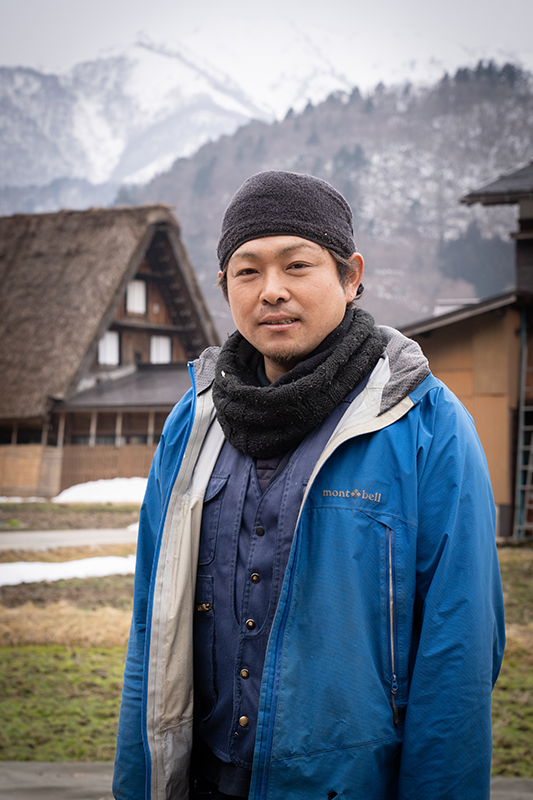
“Until I was 30 I was working in construction,” he explains, he switched professions after feeling inspired to help restore the legacy of his home. For five years now, he’s been working to repair the gassho-zukuri, as well as spearheading a word-of-mouth initiative to encourage the area to start growing and cultivating the grass used to create the roofs.
“Most of the grass we use now is from Shizuoka,” Mr. Kuroki explains, “but it was once all grown on the mountains that surround us.” Members of the village once each owned a portion of the mountains that surround Shirakawa-go. On those pieces of land, traditionally, the homeowners would grow and harvest the grass, which was later used to repair the roof of their home. It was the ultimate in self-sufficiency. With modern times, as transport became more convenient, it was easier to ship in the grass from areas with less harsh climates. Today many of the mountains are now home to kaya tree plantations.
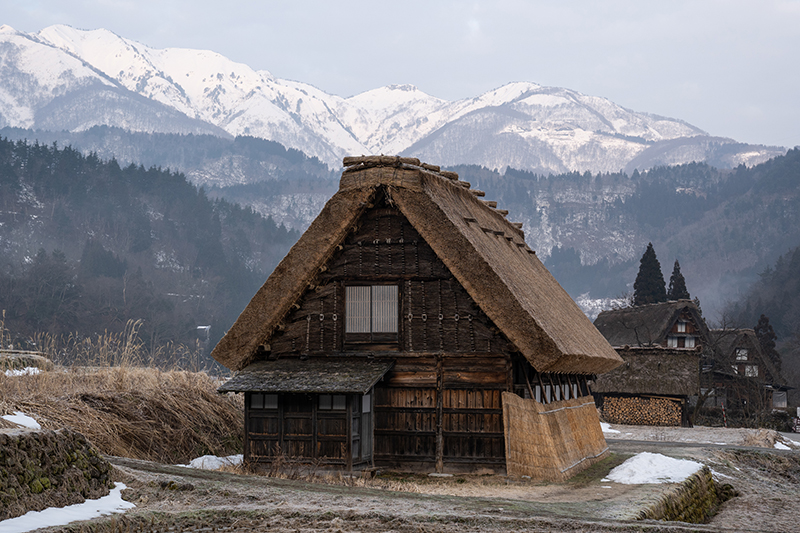
“Currently, about 90% of the grass we use is from outside the prefecture and 10% is from here,” Mr. Kuroki estimates. Today some of the roofing in Shirakawa-Go houses is made from the locally grown grass, but it is more challenging to grow, you also can’t just use any grass. It has to be specially groomed. That said, if they were to use local grass, Mr. Kuroki thinks it would be “more affordable,” “but,” he clarifies, “that’s not the point, the reasoning for my push, I want to keep true to the spirit of the village.” “It’s still a dream,” he says, “but something I hope to achieve.”
Being a roof thatcher isn’t an easy job. For one roof, it takes about a month to complete, and most houses require a roof restoration every 20 years or so. To do this job, you’ve got to be fit, not afraid of heights, willing to work in harsher climates, well trained, and knowledgeable about the biggest threats to the straw that’s woven to create the roof—which, according to the local builders, is snow (thanks to weight and the potential for rot).

Across the nation, temples, shrines, and other construction-style jobs are facing a shortage of younger, able workers. So, I was stunned to notice that most of the men working on the roof repair site were relatively young, especially by modern Japanese standards. According to Mr. Kuroki, “there are a lot of people from the village that want to become thatchers, but surprisingly there are not enough homes in Shirakawa-go to fill the job demand.” So how does someone make the cut to become a thatcher? “Well, everyone who works here has their own thatched roof, so they have some background,” he explains.
I asked Mr. Kuroki why he thinks it’s a popular job, his answer connects back to yesterday’s ‘yui’ discussions with Mr. Wada; “we teach the local children about their village’s history. We visit the schools and try to inspire the students. As a result, many of the kids think what we do is pretty cool.”

After speaking with Mr. Wada and Mr. Kuroki about Shirakawa-go’s driving force of ‘yui’, I feel like I’ve been handed a new perspective on how to view my relationship with the world. It’s fascinating how ancient philosophies, ones built on the human instinct for survival in a time of great isolation, still carry so much weight today.

While we may think that our present world is more ‘connected’ than it’s ever been—both physically via roads and infrastructure and in communication through technical advances—there’s a lot we can still learn about the true human connection from a place like Shirakawa-go.














